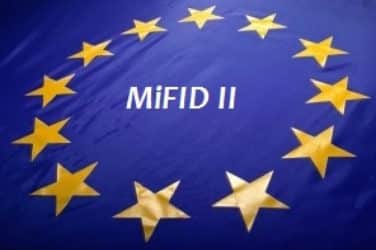Each firm always has a least one of those “special” clients who requires a substantial amount of additional work to support and keep their business.
For many US asset managers, this just may be the firm’s one European client who just trades US instruments that will force them to comply with the EU’s MiFID II regulatory regime.
Lager asset managers, such as Pimco, have been preparing to meet the new regulations, which goes into effect on January 3, 2018.
“We have offices in Europe that do both trading and manage accounts for clients, so this thing impacts us in many ways, said Yanay Lehavi, executive vice president technology at Pimco during a webinar hosted by IMP Consulting
“In terms of changes we had to make, they are predominately are to operating procedures, some legal documentation that we had to beef up, and a lot of surveillance and making sure that we didn’t miss any of this massive legislative change.”
If US-based asset managers are making trades on behalf of US clients in Europe or European clients in the US, they will need to report those trades and transactions to the appropriate European regulators.
Two of the most immediate requirements will be trade and transaction reporting.
Asset managers need to submit trade reports, which is public information about the trade similar to a ticker tape, on the same day as the trade, explained Jon Gold, a managing director at IMP Consulting.
“Transaction reporting involves the non-public information regarding the trade and is only intended for the regulators,” he added.
In case US asset managers plan to err on the side of over-reporting while sorting out their new regulatory obligations, they could reconsider their strategies.
“If you fail to report something you get fined,” said Gold. “If you report something that you’re not supposed to report, you also get fined.”
There was a recent conversation within the EU that the sell side, and not the asset managers, would be responsible for trade reporting.
“But, the sell side appealed debating what the definition of what a ‘systematic internalizer’ really means,” said Lehavi. So, they decided to dump it on us. The buy side will have to do that reporting until at least October 2018, which means we have to build all the infrastructure regardless.”
For those US asset managers that have not captured their workflows yet, there is no time to waste, said Jane Stabile, president of IMP Consulting.
“If your firm supports best-of-breed when it comes to order management systems and so forth, you may have multiple order management systems and multiple compliance engines,” she added. “You will need to consolidate all of those views.”
Putting together the actual reports will be easier than collecting the data; putting it in the right place; and selecting who will maintain it on an ongoing basis, according to Lehavi.
“That is when you are going to spend time in the conference room enjoying yourself,” he said.




